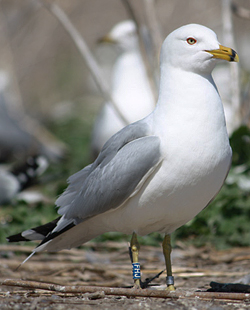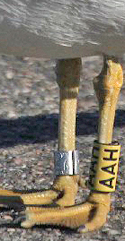|
||||||||||
Coordinators: 1cy June 2cy Jan 3cy Jan adult Jan |
adult: February
A study on the behavior of Ring-billed Gulls coordinator: Jean-François Giroux - UQAM We do not know whether Ring-billed gulls (Larus delawarensis) were common when Montreal was established in 1642. However, we know that at the beginning of the previous century, the birds were rare because their eggs were harvested and their flight feathers served as ornaments on lady’s hats. Protected through the Migratory Bird Treaty Act signed in 1916, the population increased and sightings in the Montreal area became more prevalent around 1930. The first nests were located in 1953 on Île Moffat that was later transformed into Île Notre-Dame for Expo 67. The birds then moved to Île de la Couvée, an island created during the St. Lawrence Seaway construction. Today, the North American population is estimated at 1.7 million birds with approximately 240,000 in Quebec. In the Montreal area, the main colony with nearly 45,000 pairs is located on Île Deslauriers located on the St. Lawrence River near Varennes. Surveys by the Canadian Wildlife Service show that the population is stable or slightly decreasing. Ring-billed Gulls start breeding around 3-years old and can live for 10-15 years. Some individuals have even reached 27-years old! They nest in colonies of few hundreds to several thousands birds and lay 3 eggs in a simple cup on the ground. Incubation lasts 25-27 days and young are semi-precocial which means that they leave the nest few hours after hatching but remained in the surroundings to be fed by their parents for 30-40 before fledging. On average, each pair produces 1-2 juveniles. Adults can forage near the colonies but can reach distance up to 50 km. Refuse from anthropogenic sources constitute nearly 70% of the food delivered to the young. Landfills are attractive sites but regulations required to rapidly cover residual material and to implement scaring programs. Downtown, garbage containers that remain open are visited by gulls and the bad habit of people to feed them exacerbates the problem. Gulls can carry fecal coliforms and other pathogens that can infect humans but no case of transmission have been reported. Gull droppings on buildings, cars, patios, etc. are often considered a nuisance that incite citizens to complain. Gulls are significant bird hazards to aircraft near airports according to Transport Canada. Several techniques have been developed to scare gulls from landfills, airports and cities. Pyrotechnics and acoustic devices usually have a limited efficiency because the birds become used to these techniques. They often simply result in the displacement of the birds and consequently of the problems. Ring-billed Gulls are protected under federal laws and no control can be implemented without a permit issued by Environment Canada. Managing populations considered over-abundant requires detailed knowledge on their ecology in order to implement any management plan. The on-going study about movements, habitat use and population dynamics conducted by UQAM researchers and their partners aims at providing such information. An integrated approach that consists in reducing the amount of residual material, a better management of these residues before and after their removal at individual homes and a comprehensive education program to discourage people of feeding the birds should be promoted.
Ring-billed Gulls under scrutinyIn 2006, Terrebonne and Repentigny contracted the consulting firm, Chamard & Associés to find solutions for reducing problems associated with the presence of gulls in their surroundings. The main conclusion of the report was that an integrated and regional approach was required. A regional coordination committee for the management of gulls was then established in 2007. The stakeholders include several elected councillors and employees of nearby cities and municipalities, two owners of landfill sites, a representative of the Union des producteurs agricoles (UPA) and a biologist from Environment Canada, responsible for enforcing the Migratory Birds Convention Act. The working group coordinated by Chamard & Associés concluded that the lack of scientific information about the ecology of Ring-billed gulls precluded drafting of a management plan. Researchers from UQAM and other Quebec universities then proposed to design a research project to study the behaviour of Ring-billed Gulls in urban and suburban areas within an integrated management framework. With the contribution of several partners and a research grant from the Natural Sciences and Engineering Research Council of Canada (NSERC), a vast study on the behavior of Ring-billed gulls was conducted between 2009 and 2012 in the greater Montreal area. Some research projects are still ongoing and deal with the population dynamics of these birds, their post-breeding dispersion and roof-nesting. In 2009, a team of researchers initiated a study on the ecology of Ring-billed Gulls in the Montreal area to understand their feeding behaviour, movements during the breeding and post-breeding periods, and their population dynamics. General objectivesIncreasing refuse and poor management of landfills in the XXe century as well as the tradition of people to feed gulls have contributed to the exponential growth of several populations of larids both in Europe and North America. In the Montreal region, over 75,000 pairs of Ring-billed gulls (Larus delawarensis) nest on islands located in the St. Lawrence River, on Rivière des Prairies and more recently on flat roofs of buildings in industrial sectors. Gulls are attracted at landfills where costly scaring programs must be maintained to reduce the presence of birds. When traveling back and forth from the colonies to the feeding sites, gulls often fly over residential areas where they may let droppings down causing some disagreements for citizens who require control measures. After the breeding season, gulls disperse over large areas where they are often observed on lakes where water contamination is considered a health risk by citizens. Preparing a management plan for a species like the Ring-billed gull requires adequate knowledge about its ecology. Until recently, there was little information available on the distribution, movements, habitat use and the population dynamics of Ring-billed gulls in southern Quebec. The general objective of our project was therefore to study the foraging behavior and population dynamics of gulls living in urban and peri-urban settings within an integrated management framework. Several aspects have been completed whereas others are still ongoing. We concentrate our study on Île Deslauriers in the St. Lawrence River where 45,000 pairs of gulls are nesting but we are also visiting other nearly smaller colonies. Our results will be used to prepare a first management plan that aims at reducing the problems associated with the presence of gulls. Main resultsDistribution and movements of gulls during and after the breeding season. We were interested to know whether individual gulls forage at the same sites or if they were exploiting different parts of the study area. We specifically wanted to know if they were faithful to their feeding sites. We also proposed to study the activity pattern of breeding the gulls (frequency and length of feeding trips). Finally, we wanted to determine how the gulls disperse after the breeding period to establish their distribution in particularly in relation with the lakes known to be used as night roosts. Between 2009 and 2011, we fitted 161 birds with miniature GPS data loggers and characterised 1,765 foraging trips within the Montreal area. The birds were captured on their nests, fitted a logger, released, recaptured 3-4 days later to recover the device, downloaded the data, recharged the unit that could then de deployed again on another bird. Feeding sites were located between 0.5 and 45 km from the colony with a median of 12 km and return trips reaching 25 km. These data allowed us to delimit the territory visited by gulls and to establish the zones at risk during the breeding period. These results area presented in Martin Patenaude-Monette M.Sc. thesis and are used by Cécile Girault during her Ph.D. During the first year of the study, we observed large-scale dispersal movements of some marked birds. In 2010 and 2011, we therefore fitted 25 birds (2 juveniles and 23 adults) with GPS-Argos PTT. These devices allow tracking of birds over large distances because locations are transmitted via satellites. In addition, the loggers are fitted with solar panels to recharge the batteries, which have allowed us to follow some birds for three years. Two GPS locations are obtained each day: at noon to get an idea of the feeding areas and at midnight to locate the roosts. Data are sent once a week via satellites. Ph.D. student, Cécile Girault, has found that nearly 75% of the adult birds undertake post-breeding movements and those individuals are very faithful to their dispersal routs and post-breeding staging sites. Finally, we have captured 4,750 adults and 2,650 juveniles in different colonies and marked them with individually-coded colored plastic bands. So far, we have totalled 4,750 observations of 2,220 individuals through the dedicated work of our students, technicians and volunteer observers. Using the repeated observations of the same individuals within and between years, Cécile Girault has confirmed the great fidelity of the birds to their fall staging and wintering areas. Habitats used by gulls for feeding and energetic budget.We wanted to first identify the habitats used by gulls for feeding during different periods of their annual cycle. Next, we wanted to update the information about the food habits of chicks and to characterize the food consumed by adults and sub-adults in different habitats. Finally, we had proposed to compare the energy content of food consumed by gulls at landfills, in agricultural lands and in natural riparian habitats. These objectives were achieved by Martin Patenaude-Monette in his M.Sc. thesis. The detailed tracking of gulls with miniature GPS data loggers during egg incubation and chick rearing has shown that gulls predominantly used agricultural lands (annual crops) located closed to the colony followed by landfills, especially those located further away from the colony where no deterrence program was conducted or those located closer but during periods with no scaring operation. Finally, urban areas and lawns in parks were used as a third choice. Using data from the Argos-satellite tracking devices, Cécile Girault has determined that shopping centers were the most visited habitat after the breeding season in the Montreal area whereas the shores of the St. Lawrence River received the greatest use by birds that dispersed outside the region. We collected and analyzed over 500 pellets from chicks on the Deslauriers colony as well as stomach contents of 165 birds (adults, sub-adults and juveniles) collected on the colony, at landfills (culling program), and in agricultural lands. Approximately 70% of items brought by adults to their juveniles were edible refuse (meat, bread, fries and potatoes), 9% annelids (earthworms), 8% insects and 7% vertebrates (small mammals). In agricultural lands, gulls consumed earthworms and spilled grains (corn and soya). We measured the calorimetric values of the different items and found that the diet obtained in landfills had the greatest energy content compared to agricultural lands. Do gulls use social information?We had proposed to study the mechanisms involved when gulls were actively foraging for patchy and ephemeral food resources using three indicators that could demonstrate the use of public information: foraging trip characteristics, juvenile diet and isotopic signatures found in the primary feathers grown during brood rearing. We submitted the hypothesis that if public information was exchanged, these indices would be more similar for birds nesting in close vicinity than for those located further apart. This study was part of François Racine M.Sc. thesis that was published in the journal Animal Behaviour. He found that information about feeding sites was available because he could predict the final direction that a gull ended up feeding from its initial direction when departing the colony. However, he failed to find that this information was shared among birds while attending their nests. He found that neighbouring nesting pairs did not depart at the same time or in the same direction. François Racine submitted the hypothesis that gulls could exchange information about the location of food resources when they use other parts of the colony. He proposed that such exchange could take place when gulls are landing along the shore of the island or in shallow water around the colony after leaving their nest. Finally, the isotopic signatures of flight feathers of juveniles allowed us to determine that the diet of young varies with chicks’ age but not the island section. Assessing the problems caused by gulls. We wanted to evaluate the magnitude and characteristics of the alleged problems related to the presence of gulls. We also proposed to compare the efficiency of different education programs to discourage citizens from feeding gulls. Finally, we wanted to verify whether the use of lakes by roosting gulls could contribute to water contamination. In collaboration with Sandra Messih of Chamard et Associés, we prepared a questionnaire that was submitted to 405 households located in 3 municipalities (Terrebonne, Mascouche et Repentigny). The results of this survey that are part of Cynthia Moreau M.Sc. thesis indicate that 95% of citizens realised that gulls are attracted by food. As a follow up question, 62% believe that birds find their food in shopping centers and 75% at landfills. The majority (97%) declared that they do not feed gulls. Over half of the respondents (53%) considered that gulls were a nuisance while 28% judged that they were nice birds. A quarter of the citizens who participated to the survey considered that the gull population was overabundant and 52% were preoccupied by their presence. Their main concern was pathogen transmission (75%) and fouling of their properties (29%). Two-thirds believe that a well structured education program could modify people behavior to stop feeding the gulls and to better manage their garbage. Finally, only 17% correctly identified the federal government as the administration responsible for managing this species. During the fall 2009 and 2010, we conducted weekly surveys at 10 lakes in the Laurentides region (Echo, Bellevue, Descôteaux, Duquette, Pineault, L’Achigan, Aubrisson, Bleu, Connelly, and Maillé) to evaluate their use by roosting gulls. Lake Connelly was the only lake regularly used and a maximum of 3,000 birds was counted in 2009 and 1,500 in 2010. The use of the lakes was thus much more limited than what was anticipated and we speculated that this may be related to the reduced use of the Ste-Sophie landfill and the desertion of the Ile de la Couvée colony. This prevented us to design a study to compare water contamination between lakes used and unused by gulls. Scaring methods at landfills. We had proposed to compare the efficiency of different deterrence programs at landfills, particularly the use of falconry and culling. We also wanted to test the use of rubber shots as an alternative to lethal steel shots. We submitted the hypothesis that gulls hit with rubber pellets would be less incline to return to landfills and that with time an increasing proportion of birds would avoid these sites. During her M.Sc. degree, Éricka Thieriot worked in close collaboration with Pierre Molina, Falcon Environmental Services and the managers of Waste Management at Ste-Sophie and BFI Canada at Terrebonne. A first paper published in Applied Animal Behaviour Science shows that rubber shots are not effective in deterring gulls from landfills. In another chapter of her thesis, she clearly demonstrated a reduction in bird use at both landfills with a greater reduction at the site with the more intensive program based on falconry. Éricka Thieriot proposed that the efficiency of falconry resulted from the limited access to the food. She observed that gulls spent less than 1% of their time feeding at Terrebonne under the falconry program compared to 15% at Ste-Sophie with the culling program. Managers of both sites have already applied some of our recommendations. Population dynamics of gulls. We first proposed to update the information about reproductive output of Ring-billed gulls and to initiate a banding program to estimate annual survival of juveniles and adults. We also wanted to evaluate the acceptability by citizens of different control measures to help managers in taking decisions. Between 2009 and 2012, we followed between 295 and 397 nests on Deslauriers Island and these data are part of Florent Lagarde M.Sc. thesis. He also compared his results with those obtained in 1979 in the same colony. Ring-billed gulls initiate their nests at least one week earlier now than 30 years ago; they have a similar clutch size and hatching success. The only difference in reproductive parameters was a reduction in fledging success and this resulted in a production of 1.2 birds per pair compared to 1.8 in 1979. Florent Lagarde has submitted the hypothesis that the limited access to garbage at the Terrebonne landfill following the implementation of the deterrence program could explain the difference. The banding program is well underway with 7,400 marked gulls, 4,750 observations, and 345 band recoveries of dead birds. A database has been created to manage all these data and to quickly reply to volunteer observers with detailed information about the birds that they saw and reported. After completing his M.Sc. degree, Martin Patenaude-Monette was hired as research assistant to compile all management plans conducted on various species of gulls in different parts of the world. The main conclusions of his assessment were that it is essential (1) to reduce access to food of anthropogenic origin, (2) to prevent the establishment of new colonies, especially on roofs, (3) to maintain monitoring of population size and to evaluate the management measures and (4) to coordinate the management actions of different stakeholders. As part of her survey, Cynthia Moreau asked to citizens which measures should be taken to reduce the problems associated with gulls. She found that 80% suggested that the best approach would be to implement measures that would modify the behavior of people in regards to their garbage management and hand-feeding while 59% requested that control measures be initiated to reduce the number of gulls. Conclusions. Surveys conducted by the Canadian Wildlife Service (CWS) are clearly showing that the breeding population of Ring-billed gulls in the Montreal region is either stable or maybe slightly declining. This trend including the fact that gulls are not classified as a migratory bird game species does not allow CWS to consider Ring-billed gull as an overabundant species. Our study has shown a significant decline in the use of the Terrebonne and Ste-Sophie landfills during the last 10-15 years. We are submitting the hypothesis that the population growth has stopped as a result of this reduction in landfill use by gulls. By reducing the availability of food resources required to feed juveniles, fledging success has been reduced and recruitment may have also declined compared to the period when the demographic explosion occurred. Our project also showed that the best deterrence measure was falconry and this should be applied to all landfills used by gulls during and after the breeding period. Our detailed analyses of gull movements and their diet indicate that landfills with no scaring program and transfer stations are attractive sites because they supply energy rich food resources. It is obvious that a reduction of organic wastes brought to these sites (as a result of composting or biomethanization) would reduce their attraction for the birds. Gulls use agricultural lands early in spring when farmers are plowing and disking their fields and during haying. After this intensive period, the use of agricultural lands is more sporadic. Our project did not include an assessment of the impact of gulls on agricultural lands. However, the area covered by this habitat is so large, that any management measure would be difficult to put in place. One surprising result from our study is that a significant proportion of adults leave the Montreal area in June after the breeding period. We can speculate that birds from other regions (e.g. Great Lakes) are undertaking a similar dispersal and that some Ring-billed gulls may come in southern Quebec. This makes the management of this species more complex at a local, national, and international scale because some colonies in the Great Lakes are located in Ontario and in the United States. An integrated approach is thus required to manage this species and this could start with a coordinated large-scale tracking program that would shed lights on these post-breeding movements. A problem that would likely become more acute in the future as observed elsewhere in North America and Europe is roof-nesting by gulls. More than 2,000 nests were located in 2012 at Ville St-Laurent and Dollard-des-Ormeaux in the west part of Montreal and other sites may still have been undetected. We speculate that birds that abandoned the Île de la Couvée colony near St-Lambert in 2007 or 2008 may have move to these roofs near the Montréal-Trudeau Airport. Specific control actions need to be implemented but there is a risk that birds will move from one roof to another. Ring-billed gulls can live more than 20 years, which means that any actions on nests will need to be repeated for a long period (15-20 years). Our satellite tracking of gulls has shown that Ring-billed gulls often roost on roofs throughout the Montreal area after the breeding season. The use of roofs for nesting by gulls needs to be further studied. Finally, it is essential to realize that the perception of citizens about gulls vary from one region to the next. People leaving near la landfill or a colony are more affected and are requesting that actions be taken. However, our survey has shown that the sensitivity of the people about gulls may be influenced by their past experience. It is therefore essential to inform citizens about the actual size of the population, the trends, the actions being taken at landfills and the results. For some people, controlling the size of the population by systematic culling is desirable but this is not the point of view of a majority of citizens. In 2011, more than 200 chicks were rescued and brought to a rehabilitation center where they were reared before to be released in the wild. This shows that some people are really concerned about animal protection and that needs to be taken into consideration by managers. In any cases, good scientific information is required before decisions can be taken and management plans prepared. Current and future projectsAnnual survival. We want to estimate annual survival of adults and juveniles using capture-marking-recapture models based on the repeated observations of marked individuals and band returns. We focus our observations in spring in the colonies where we can easily observe a large number of marked birds. Casual observations are also conducted at sites known to be used by gulls. Finally, we benefit from the collaboration of a network of observers that can submit their observations using a form available on our web site. Costs and benefits of post-breeding dispersal.A significant proportion of adults leave the Montreal area after the breeding season and we want to determine the costs and benefits of this dispersion. We will first determine whether dispersal influences survival rate. We also want to determine the habitats used by gulls that disperse and those that stay in the Montreal area and compare the energy obtained in these habitats based on our previous study on the energy content of different food items. Natal and breeding dispersal. Although Ring-billed Gulls are known to be faithful to their breeding colony, we have observed several shifts among colonies. We even observed marked birds nesting on roofs where no banding has taken place. We first want to document the natal dispersal of juveniles and second we propose to determine the importance and causes of breeding dispersal. Breeding success on roof-nesting gulls. We are proposing to compare the breeding success of gulls that nest on roofs vs. those that use more natural habitats (islands). High temperatures on roofs during chicks’ rearing and the constant disturbance in industrial areas could become an ecological trap for these birds. With our banding program and information of reproductive success, we hope to understand the colonisation process of roofs by nesting gulls. Citizen education. We want to compare the efficiency of various education programs to convince citizens to stop feeding the gulls either voluntarily (hand-feeding) or involuntarily (garbage mismanagement). Using different municipalities or boroughs as sampling units, we want to compare the efficiency of putting signs in parks or near fast-food restaurants or shopping centers vs. advertisements in local newspapers vs. field crew that will discuss with citizens that feed the birds. Ecotoxicology of gulls. Since 2010, we have been collaborating with Jonathan Verreault, professor at UQAM and Canada Research Chair in Comparative Avian Toxicology. His group is interested by emerging organic contaminants (e.g. flame retardants) and their effects on gulls in relation with their feeding sites. Some birds that we have tracked with miniature data loggers have been euthanized to estimate contaminant levels in various tissues and to determine the effects of pollutants on the endocrine systems and parasitic load. |
 Ring-billed Gull delawarensis AC6 adult, February 25 2014, Southbury, CT. Picture: Keith Mueller. Ring-billed Gull delawarensis AC6 adult, February 25 2014, Southbury, CT. Picture: Keith Mueller. |
||||||||
 Ring-billed Gull delawarensis F8Z adult, February 20 2016, Stratford, CT, USA. Picture: Donna Rae Caporaso. Ring-billed Gull delawarensis F8Z adult, February 20 2016, Stratford, CT, USA. Picture: Donna Rae Caporaso. |
||||||||||
 Ring-billed Gull delawarensis KPL adult, February 19 2011, Plymouth, MA. Picture: J. Trimble. Ring-billed Gull delawarensis KPL adult, February 19 2011, Plymouth, MA. Picture: J. Trimble. |
||||||||||
 Ring-billed Gull delawarensis L6T adult, February 01 2015, Island Crossing, Bristol - Bucks County, Pennsylvania. Picture: Holly Merker. Ring-billed Gull delawarensis L6T adult, February 01 2015, Island Crossing, Bristol - Bucks County, Pennsylvania. Picture: Holly Merker. |
||||||||||
 Ring-billed Gull delawarensis LM5 adult, February 07 2012, Ft. Desoto - Gulf Pier, FL. Picture: Danny Bales. Ring-billed Gull delawarensis LM5 adult, February 07 2012, Ft. Desoto - Gulf Pier, FL. Picture: Danny Bales. |
||||||||||
 Ring-billed Gull delawarensis LU2 adult, February 12 2012, Coney Island, NY. Picture: Andrew Baksh. Ring-billed Gull delawarensis LU2 adult, February 12 2012, Coney Island, NY. Picture: Andrew Baksh. |
||||||||||
 Ring-billed Gull delawarensis P6Z adult, February 26 2012, Long Wharf, CT. Picture: Keith Mueller. Ring-billed Gull delawarensis P6Z adult, February 26 2012, Long Wharf, CT. Picture: Keith Mueller. |
||||||||||
 Ring-billed Gull delawarensis PUU adult, February 16 2012, Gulf Beach, CT. Picture: Daniel McCarthy. Ring-billed Gull delawarensis PUU adult, February 16 2012, Gulf Beach, CT. Picture: Daniel McCarthy. |
||||||||||
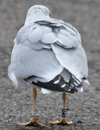 Ring-billed Gull delawarensis XP5 adult, February 28 2014, Southbury, CT. Picture: Keith Mueller. Ring-billed Gull delawarensis XP5 adult, February 28 2014, Southbury, CT. Picture: Keith Mueller. |
||||||||||
 Ring-billed Gull delawarensis CCK adult, January 04-05 2013 & February 13 2013, Guilford Harbor, CT. Picture: Keith Mueller. Ring-billed Gull delawarensis CCK adult, January 04-05 2013 & February 13 2013, Guilford Harbor, CT. Picture: Keith Mueller. |
||||||||||
 Ring-billed Gull delawarensis 39 6CY, February 06 2013, Bayonne, NJ. Picture: Chris. Ring-billed Gull delawarensis 39 6CY, February 06 2013, Bayonne, NJ. Picture: Chris. |
||||||||||
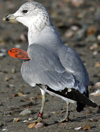 Ring-billed Gull delawarensis 643 adult, February 12 2012, Circle Beach, Madison, CT. Picture: Keith Mueller. Ring-billed Gull delawarensis 643 adult, February 12 2012, Circle Beach, Madison, CT. Picture: Keith Mueller. |
||||||||||
 Ring-billed Gull delawarensis 1095 adult, February 06 2014, Rudee Inlet, Virginia Beach, VA. Picture: Nick. Ring-billed Gull delawarensis 1095 adult, February 06 2014, Rudee Inlet, Virginia Beach, VA. Picture: Nick. |
||||||||||
 Ring-billed Gull delawarensis A 480 adult, February 25 2014, Southbury, CT. Picture: Keith Mueller. Ring-billed Gull delawarensis A 480 adult, February 25 2014, Southbury, CT. Picture: Keith Mueller. |
||||||||||
 Ring-billed Gull delawarensis A 485 adult, February 20 2011, Oyster River, West Haven, CT. Picture: Keith Mueller. Ring-billed Gull delawarensis A 485 adult, February 20 2011, Oyster River, West Haven, CT. Picture: Keith Mueller. |
||||||||||
 Ring-billed Gull delawarensis A 487 adult, February 23 2011, Shell Beach, Guilford, CT. Picture: Keith Mueller. Ring-billed Gull delawarensis A 487 adult, February 23 2011, Shell Beach, Guilford, CT. Picture: Keith Mueller. |
||||||||||
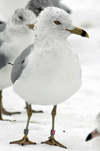 Ring-billed Gull delawarensis Fed band adult, February 28 2014, Southbury, CT. Picture: Keith Mueller. Ring-billed Gull delawarensis Fed band adult, February 28 2014, Southbury, CT. Picture: Keith Mueller. |
||||||||||
 Ring-billed Gull delawarensis Fed band adult, February 25 2014, Southbury, CT. Picture: Keith Mueller. Ring-billed Gull delawarensis Fed band adult, February 25 2014, Southbury, CT. Picture: Keith Mueller. |
||||||||||
 Ring-billed Gull delawarensis Fed band adult, February 28 2014, Southbury, CT. Picture: Keith Mueller. Ring-billed Gull delawarensis Fed band adult, February 28 2014, Southbury, CT. Picture: Keith Mueller. |
||||||||||
 Ring-billed Gull delawarensis Fed band adult, February 28 2014, Southbury, CT. Picture: Keith Mueller. Ring-billed Gull delawarensis Fed band adult, February 28 2014, Southbury, CT. Picture: Keith Mueller. |
||||||||||
 Ring-billed Gull delawarensis Fed band adult, February 28 2014, Southbury, CT. Picture: Keith Mueller. Ring-billed Gull delawarensis Fed band adult, February 28 2014, Southbury, CT. Picture: Keith Mueller. |
||||||||||
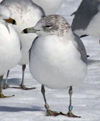 Ring-billed Gull delawarensis Fed band adult, February 25 2014, Southbury, CT. Picture: Keith Mueller. Ring-billed Gull delawarensis Fed band adult, February 25 2014, Southbury, CT. Picture: Keith Mueller. |
||||||||||
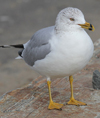 Ring-billed Gull delawarensis adult, February 08 2013, Guilford Harbor, CT. Picture: Keith Mueller. Ring-billed Gull delawarensis adult, February 08 2013, Guilford Harbor, CT. Picture: Keith Mueller. |
||||||||||
 Ring-billed Gull delawarensis adult, February 22 2012, Virginia Lake, Reno, Washoe Co, Nevada. Picture: Fugle. Ring-billed Gull delawarensis adult, February 22 2012, Virginia Lake, Reno, Washoe Co, Nevada. Picture: Fugle. |
||||||||||
_RWD1.jpg) Ring-billed Gull delawarensis adult, February 14 2007, North Carolina, USA. Picture: Dick Daniels. Ring-billed Gull delawarensis adult, February 14 2007, North Carolina, USA. Picture: Dick Daniels. |
||||||||||
 Ring-billed Gull delawarensis adult, February 17 2008, Fort De Soto Park, Florida. Picture: Reinhard Giesler. Ring-billed Gull delawarensis adult, February 17 2008, Fort De Soto Park, Florida. Picture: Reinhard Giesler. |
||||||||||
 Ring-billed Gull delawarensis adult, February 24 2007, Santa Ana River mouth, Orange Co., CA. Picture: John Avise. Ring-billed Gull delawarensis adult, February 24 2007, Santa Ana River mouth, Orange Co., CA. Picture: John Avise. |
||||||||||
 Ring-billed Gull delawarensis adult, February 13 2014, BP Whiting refinery, IN. Picture: Maarten van Kleinwee. Ring-billed Gull delawarensis adult, February 13 2014, BP Whiting refinery, IN. Picture: Maarten van Kleinwee. |
||||||||||
 Ring-billed Gull delawarensis adult, February 13 2014, BP Whiting refinery, IN. Picture: Maarten van Kleinwee. Ring-billed Gull delawarensis adult, February 13 2014, BP Whiting refinery, IN. Picture: Maarten van Kleinwee. |
||||||||||
 Ring-billed Gull delawarensis adult, February 13 2014, BP Whiting refinery, IN. Picture: Maarten van Kleinwee. Ring-billed Gull delawarensis adult, February 13 2014, BP Whiting refinery, IN. Picture: Maarten van Kleinwee. |
||||||||||
 Ring-billed Gull delawarensis adult, February 13 2014, BP Whiting refinery, IN. Picture: Maarten van Kleinwee. Ring-billed Gull delawarensis adult, February 13 2014, BP Whiting refinery, IN. Picture: Maarten van Kleinwee. |
||||||||||
 Ring-billed Gull delawarensis adult, February 17 2014, BP Whiting refinery, IN. Picture: Maarten van Kleinwee. Ring-billed Gull delawarensis adult, February 17 2014, BP Whiting refinery, IN. Picture: Maarten van Kleinwee. |
||||||||||
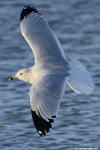 Ring-billed Gull delawarensis adult, February 13 2014, BP Whiting refinery, IN. Picture: Maarten van Kleinwee. Ring-billed Gull delawarensis adult, February 13 2014, BP Whiting refinery, IN. Picture: Maarten van Kleinwee. |
||||||||||
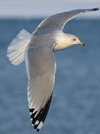 Ring-billed Gull delawarensis adult, February 13 2014, BP Whiting refinery, IN. Picture: Maarten van Kleinwee. Ring-billed Gull delawarensis adult, February 13 2014, BP Whiting refinery, IN. Picture: Maarten van Kleinwee. |
||||||||||
 Ring-billed Gull delawarensis adult, February 13 2014, BP Whiting refinery, IN. Picture: Maarten van Kleinwee. Ring-billed Gull delawarensis adult, February 13 2014, BP Whiting refinery, IN. Picture: Maarten van Kleinwee. |
||||||||||
 Ring-billed Gull delawarensis adult, February 13 2014, BP Whiting refinery, IN. Picture: Maarten van Kleinwee. Ring-billed Gull delawarensis adult, February 13 2014, BP Whiting refinery, IN. Picture: Maarten van Kleinwee. |
||||||||||
 Ring-billed Gull delawarensis adult, February 25 2007, Wilmington, New Hanover Co., NC. Picture: captain Peter. Ring-billed Gull delawarensis adult, February 25 2007, Wilmington, New Hanover Co., NC. Picture: captain Peter. |
||||||||||
 Ring-billed Gull delawarensis adult, February 15 2012, Ridgefield NWR, Portland, OR. Picture: Dennis Davenport. Ring-billed Gull delawarensis adult, February 15 2012, Ridgefield NWR, Portland, OR. Picture: Dennis Davenport. |
||||||||||
 Ring-billed Gull delawarensis adult, February 05 2009, Coney Island - Brooklyn. Picture: Sheltieboy. Ring-billed Gull delawarensis adult, February 05 2009, Coney Island - Brooklyn. Picture: Sheltieboy. |
||||||||||
 Ring-billed Gull delawarensis adult, February 27 2012, Gaithersburg, Maryland. Picture: Darshan Vaishnav. Ring-billed Gull delawarensis adult, February 27 2012, Gaithersburg, Maryland. Picture: Darshan Vaishnav. |
||||||||||
 Ring-billed Gull delawarensis adult, February 13 2014, BP Whiting refinery, IN. Picture: Maarten van Kleinwee. Ring-billed Gull delawarensis adult, February 13 2014, BP Whiting refinery, IN. Picture: Maarten van Kleinwee. |
||||||||||
 Ring-billed Gull delawarensis adult, February 13 2014, BP Whiting refinery, IN. Picture: Maarten van Kleinwee. Ring-billed Gull delawarensis adult, February 13 2014, BP Whiting refinery, IN. Picture: Maarten van Kleinwee. |
||||||||||
 Ring-billed Gull delawarensis adult, February 13 2014, BP Whiting refinery, IN. Picture: Maarten van Kleinwee. Ring-billed Gull delawarensis adult, February 13 2014, BP Whiting refinery, IN. Picture: Maarten van Kleinwee. |
||||||||||
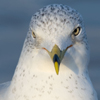 Ring-billed Gull delawarensis adult, February 13 2014, BP Whiting refinery, IN. Picture: Maarten van Kleinwee. Ring-billed Gull delawarensis adult, February 13 2014, BP Whiting refinery, IN. Picture: Maarten van Kleinwee. |
||||||||||
 Ring-billed Gull delawarensis adult, February 07 2009, New York. Picture: Dick Daniels. Ring-billed Gull delawarensis adult, February 07 2009, New York. Picture: Dick Daniels. |
||||||||||
 delawarensis Ring-billed Gull
delawarensis Ring-billed Gull
